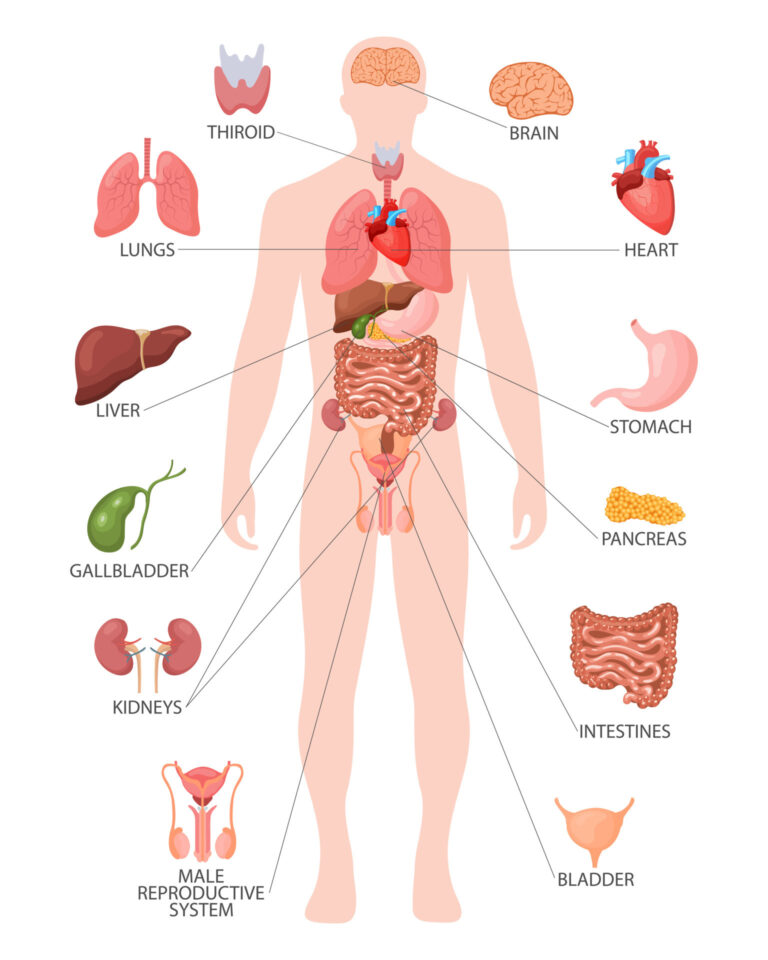Car Depreciation By Brand: Navigating the Hidden Cost of Vehicle Ownership
Car Depreciation By Brand: Navigating the Hidden Cost of Vehicle Ownership cars.truckstrend.com
Owning a car is a significant investment, but unlike a house or certain financial assets, its value almost immediately begins to decline the moment it leaves the dealership lot. This phenomenon is known as depreciation, and it represents the single largest "cost" of vehicle ownership after fuel and maintenance. While inevitable, the rate at which a car depreciates varies wildly, and one of the most critical factors influencing this decline is the brand itself.
Understanding car depreciation by brand isn’t just an academic exercise; it’s a vital piece of knowledge for anyone looking to buy, sell, or simply manage their automotive budget effectively. A car’s brand reputation, reliability, market demand, and even its segment can dramatically impact how much value it retains over time. This comprehensive guide will delve into the intricacies of car depreciation by brand, offering insights, practical advice, and a clearer picture of what to expect when your vehicle’s value diminishes.
Car Depreciation By Brand: Navigating the Hidden Cost of Vehicle Ownership
Understanding Car Depreciation: The Basics
Before we explore brand specifics, let’s solidify our understanding of depreciation. Simply put, depreciation is the loss in value of an asset over time. For cars, this loss begins the moment you drive it off the lot. The most significant drop in value typically occurs in the first year (often 15-20% or more), and then continues at a slower, but still substantial, rate over the next few years. By the five-year mark, most vehicles have lost well over 50% of their original purchase price.
Several general factors contribute to this decline:
- Wear and Tear: Natural aging and use of components.
- Mileage: Higher mileage generally correlates with lower value.
- Condition: Accidents, poor maintenance, and cosmetic damage accelerate depreciation.
- New Models: The introduction of newer, updated models makes older ones less desirable.
- Market Saturation: Abundance of a particular model can drive down its price.

However, these general factors are amplified or mitigated by brand-specific attributes, which is where "Car Depreciation By Brand" becomes such a crucial topic.
Factors Influencing Brand Depreciation
Why do some brands hold their value like a Fort Knox vault, while others plummet faster than a lead balloon? It boils down to a confluence of factors, many of which are intrinsically linked to the brand’s identity and market positioning.
-
Brand Reputation and Reliability: This is arguably the most significant factor. Brands like Toyota and Honda have built decades-long reputations for unparalleled reliability, low maintenance costs, and longevity. Buyers are willing to pay more for used vehicles from these brands because they anticipate fewer headaches and lower ownership costs down the line. Conversely, brands perceived as less reliable or more prone to expensive repairs will see their values drop more sharply.
-
Demand and Popularity: Models and brands that are consistently in high demand tend to depreciate slower. This is a supply-and-demand dynamic. If many people want a specific brand or model (e.g., a popular SUV or truck), its resale value will remain strong. Brands with niche appeal or those that struggle to connect with a broad audience may experience faster depreciation.
-
Segment and Vehicle Type: Certain vehicle segments inherently depreciate slower. Full-size pickup trucks, for example, consistently hold their value exceptionally well due to their utility, durability, and essential role in many industries and lifestyles. Similarly, many SUVs tend to fare better than sedans or hatchbacks, reflecting current market preferences. Luxury vehicles, despite their high initial price, often depreciate quickly in absolute dollar terms due to their expensive maintenance and rapid technological obsolescence.
-
Fuel Efficiency and Environmental Concerns: In an era of fluctuating fuel prices and growing environmental awareness, vehicles known for their excellent fuel economy or hybrid/EV technology often hold their value better, especially if the charging infrastructure or hybrid technology is well-established and reliable. However, rapidly evolving EV technology can also lead to faster depreciation for older EV models as new, more capable ones emerge.
-
Technology and Features: While advanced technology can initially make a car appealing, it can also accelerate depreciation if it becomes outdated quickly, is prone to glitches, or is expensive to repair. Simple, reliable features often age better than complex, cutting-edge ones.
-
Maintenance Costs and Parts Availability: Brands known for high maintenance costs, expensive parts, or requiring specialized servicing will typically see faster depreciation. Buyers of used cars are wary of inheriting a vehicle that will be a financial drain.
-
Warranty and Service Programs: Generous warranties (e.g., 5-year/60,000-mile comprehensive) can instill confidence in potential used-car buyers, positively impacting resale value. Strong certified pre-owned (CPO) programs also help maintain brand value.
-
New Model Introductions and Redesigns: Brands that frequently introduce completely redesigned models can inadvertently depress the value of their older models. The "newest and greatest" always makes the previous generation seem less desirable.
-
Market Conditions and Economic Factors: Broader economic trends, interest rates, and even global events can influence the used car market as a whole, affecting all brands to varying degrees.
Top Brands for Retaining Value (and Why)
Certain brands consistently outperform the market when it comes to holding their value. These are often the "smart money" choices if minimizing depreciation is a priority.
- Toyota: Consistently a top performer. Toyota’s reputation for bulletproof reliability, low cost of ownership, and widespread parts availability makes them highly desirable in the used car market. Models like the Tacoma, 4Runner, and Highlander are legendary for their resale value.
- Honda: Close behind Toyota, Honda shares a similar reputation for reliability, fuel efficiency, and practical design. The Civic, CR-V, and Accord are perennial favorites.
- Subaru: With a strong emphasis on all-wheel drive, safety, and a loyal customer base, Subaru models like the Outback, Forester, and Crosstrek maintain excellent resale value, particularly in regions with harsh weather.
- Jeep: Iconic for their off-road capability and adventurous image, Jeeps, especially the Wrangler, hold their value incredibly well. Their unique styling and strong community appeal contribute significantly.
- Porsche: At the higher end of the market, Porsche vehicles, particularly the 911, demonstrate remarkable value retention. This is due to their limited production, exceptional engineering, performance, and strong brand prestige that often transcends typical depreciation curves.
- Pickup Trucks (e.g., Ford F-150, Chevrolet Silverado, Ram): While not a single brand, the full-size pickup truck segment is a powerhouse for value retention. Their utility, durability, and essential role for businesses and individuals ensure constant demand.
Brands That Depreciate Faster (and Why)
On the flip side, some brands, despite their initial allure, tend to shed value more rapidly. This doesn’t necessarily make them "bad" cars, but it’s an important consideration for buyers.
- Luxury European Brands (e.g., BMW, Mercedes-Benz, Audi, Volvo): While prestigious new, these brands often suffer from significant depreciation. The reasons include high initial purchase prices, complex and expensive maintenance/repairs (especially as they age), rapid technological advancements that make older models feel dated quickly, and the prestige factor of owning a new luxury vehicle. The market for affordable used luxury cars is often smaller than the market for affordable reliable cars.
- Certain American Sedans/Hatchbacks (e.g., some Chrysler, Nissan, or Ford models): Some sedans or less popular models from these brands can depreciate faster due to factors like oversupply, aggressive new car incentives that devalue older models, or a perception of lower quality or less desirable features compared to competitors.
- Less Popular Niche Brands/Models: Any brand or model with limited market appeal, specialized features that only a few buyers want, or a reputation for being quirky rather than universally practical, may struggle to find buyers in the used market, leading to faster depreciation.
- Brands with High Repair Costs: Vehicles from brands notorious for expensive out-of-warranty repairs will also see their values drop more quickly as they age, as buyers anticipate these future costs.
Practical Advice for Minimizing Depreciation
While brand choice is paramount, there are steps you can take to mitigate depreciation regardless of the badge on the hood.
- Choose Wisely: Research historical depreciation data for specific models and brands before buying. Websites like Kelley Blue Book (KBB), Edmunds, and J.D. Power provide valuable insights.
- Maintain Your Vehicle Religiously: Follow the manufacturer’s recommended service schedule. Keep detailed records of all maintenance and repairs. A well-documented service history is a major selling point.
- Keep it Clean and Pristine: Regular washing, waxing, and interior detailing prevent wear and tear. Address minor dents, scratches, and stains promptly. A clean car looks better and commands a higher price.
- Limit Mileage: The average annual mileage is around 12,000-15,000 miles. Keeping your mileage below this average can significantly boost your car’s resale value.
- Avoid Excessive Customizations: While personalizing your car might be fun, highly specific modifications (e.g., extreme body kits, loud exhausts, unusual paint colors) can narrow your potential buyer pool and reduce resale value.
- Protect Your Paint: Apply paint protection film or ceramic coatings to guard against chips, scratches, and UV damage, which can dull paint over time.
- Consider Certified Pre-Owned (CPO): If buying used, a CPO vehicle from a reputable brand often comes with extended warranties and rigorous inspections, making it a more attractive option with better resale potential than a non-CPO used car.
- Sell at the Right Time: Ideally, sell your car before it hits major mileage milestones (e.g., 60,000 or 100,000 miles) or before a major redesign of your model is announced.
Car Depreciation By Brand: Illustrative Averages
It’s crucial to understand that these figures are averages and estimates. Actual depreciation varies significantly by specific model, trim level, condition, mileage, and prevailing market conditions. This table provides a general sense of how various brands tend to perform over a 3-year and 5-year period.
| Brand Category | Example Brands | Average 3-Year Depreciation (%) | Average 5-Year Depreciation (%) | Key Contributing Factors |
|---|---|---|---|---|
| Excellent Value Retention | Toyota, Honda, Subaru, Porsche, Jeep, Ram, Ford (Trucks) | 20% – 30% | 35% – 45% | Unrivaled reliability, strong demand, low maintenance, utility (trucks), brand prestige (Porsche), loyal customer base, low cost of ownership. |
| Good Value Retention | Mazda, Kia, Hyundai, Volkswagen (certain models), Lexus, Acura | 25% – 35% | 40% – 55% | Improving reliability, appealing designs, competitive features, strong warranties, good quality-to-price ratio. |
| Moderate Value Retention | Chevrolet (Cars/SUVs), Ford (Cars/SUVs), Nissan, Chrysler, Dodge | 30% – 40% | 50% – 65% | Mixed reputation, market saturation, aggressive incentives on new models, some models less competitive. |
| Higher Depreciation | BMW, Mercedes-Benz, Audi, Land Rover, Cadillac, Alfa Romeo, Maserati | 35% – 50% | 55% – 75%+ | High initial cost, expensive maintenance/repairs, rapid tech evolution, luxury market preference for new models, niche appeal (some brands). |
Note: These percentages represent the loss in value from the original MSRP.
Frequently Asked Questions (FAQ)
Q1: How is car depreciation calculated?
A1: Depreciation is typically calculated as the difference between the original purchase price (MSRP or actual paid price) and the current market value (resale value). This value is influenced by age, mileage, condition, features, and market demand. Industry experts use complex algorithms and vast datasets of sales transactions to determine accurate depreciation rates.
Q2: Does mileage significantly affect depreciation?
A2: Absolutely. Mileage is one of the most critical factors. Higher mileage indicates more wear and tear, and often translates to a lower resale value. Cars with significantly less than average mileage for their age will generally command a premium.
Q3: Is it better to buy new or used to avoid depreciation?
A3: If your primary goal is to minimize the impact of depreciation, buying a used car (typically 2-3 years old) is often the smarter financial move. This is because the steepest depreciation occurs in the first year or two of a car’s life. By buying used, you let the first owner absorb that initial, significant loss.
Q4: Do electric cars depreciate differently?
A4: Yes, electric vehicles (EVs) have historically shown higher depreciation rates than their gasoline counterparts, largely due to rapidly advancing battery technology and range improvements. As newer models offer significantly better range or charging speeds, older EVs can feel outdated more quickly. However, this trend is starting to stabilize as EV technology matures and infrastructure improves. Government incentives for new EVs can also depress the used EV market.
Q5: What’s the best time to sell my car to minimize depreciation loss?
A5: The ideal time to sell is generally before your car hits major mileage milestones (e.g., 60,000 or 100,000 miles) or before a new generation of your model is released. Also, consider the season; convertibles might sell better in spring, while SUVs with AWD might fetch more in fall/winter.
Q6: Does car color affect depreciation?
A6: Yes, to a minor extent. Neutral colors like white, black, silver, and grey tend to hold their value better because they appeal to a wider range of buyers. More unique or vibrant colors might struggle to find a buyer, potentially leading to a slightly lower resale value.
Conclusion
Car depreciation is an unavoidable reality of vehicle ownership, but it doesn’t have to be a crippling financial burden. By understanding the intricate relationship between a car’s brand and its value retention, consumers can make more informed decisions. Choosing brands renowned for reliability, strong demand, and lower maintenance costs can significantly cushion the blow of depreciation. Furthermore, proactive vehicle maintenance and smart selling strategies can help maximize your car’s resale value, turning what might seem like a hidden cost into a manageable aspect of your automotive journey. Smart car ownership isn’t just about the purchase price; it’s about considering the entire lifecycle cost, with depreciation being a leading contender for your attention.




